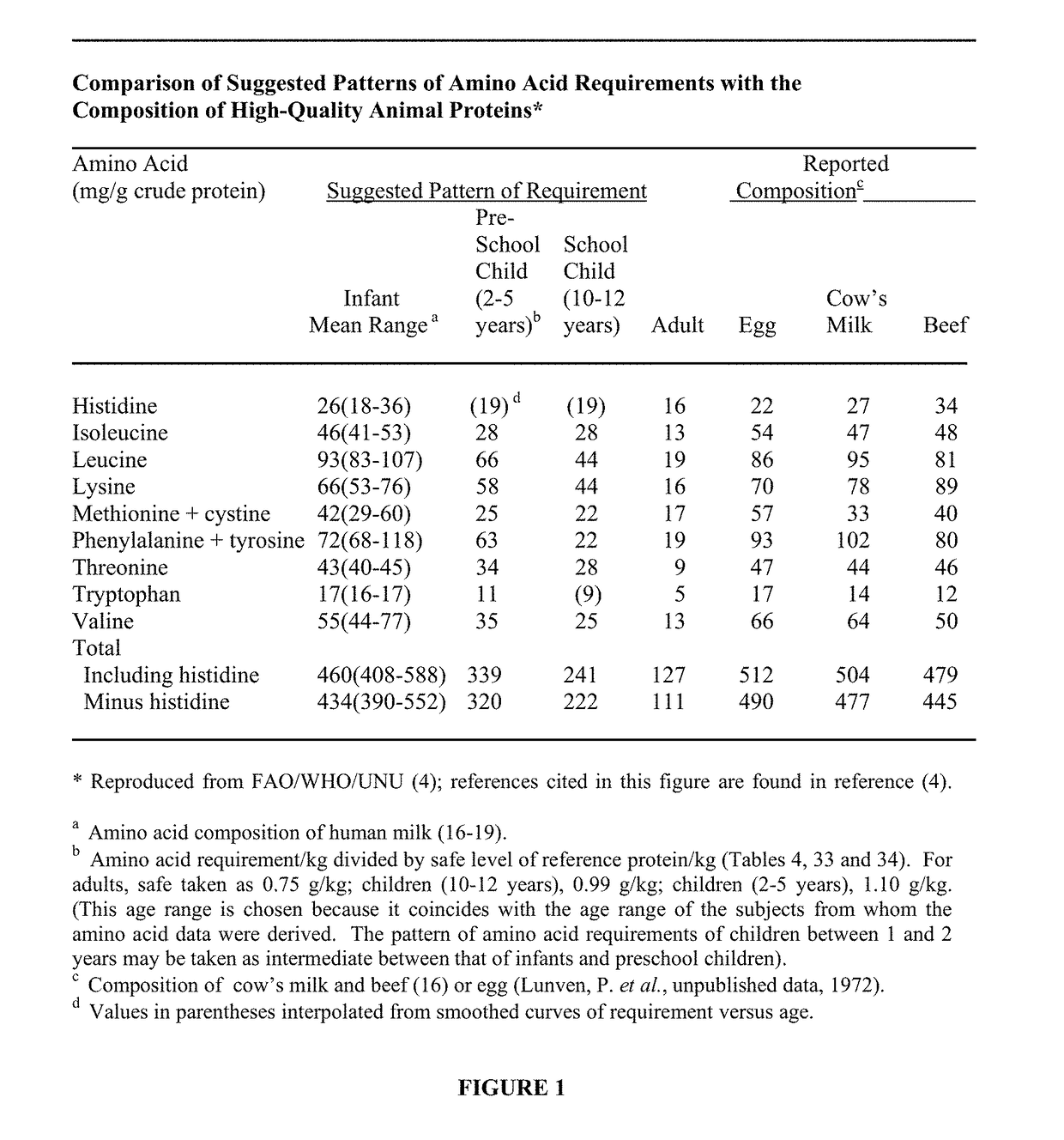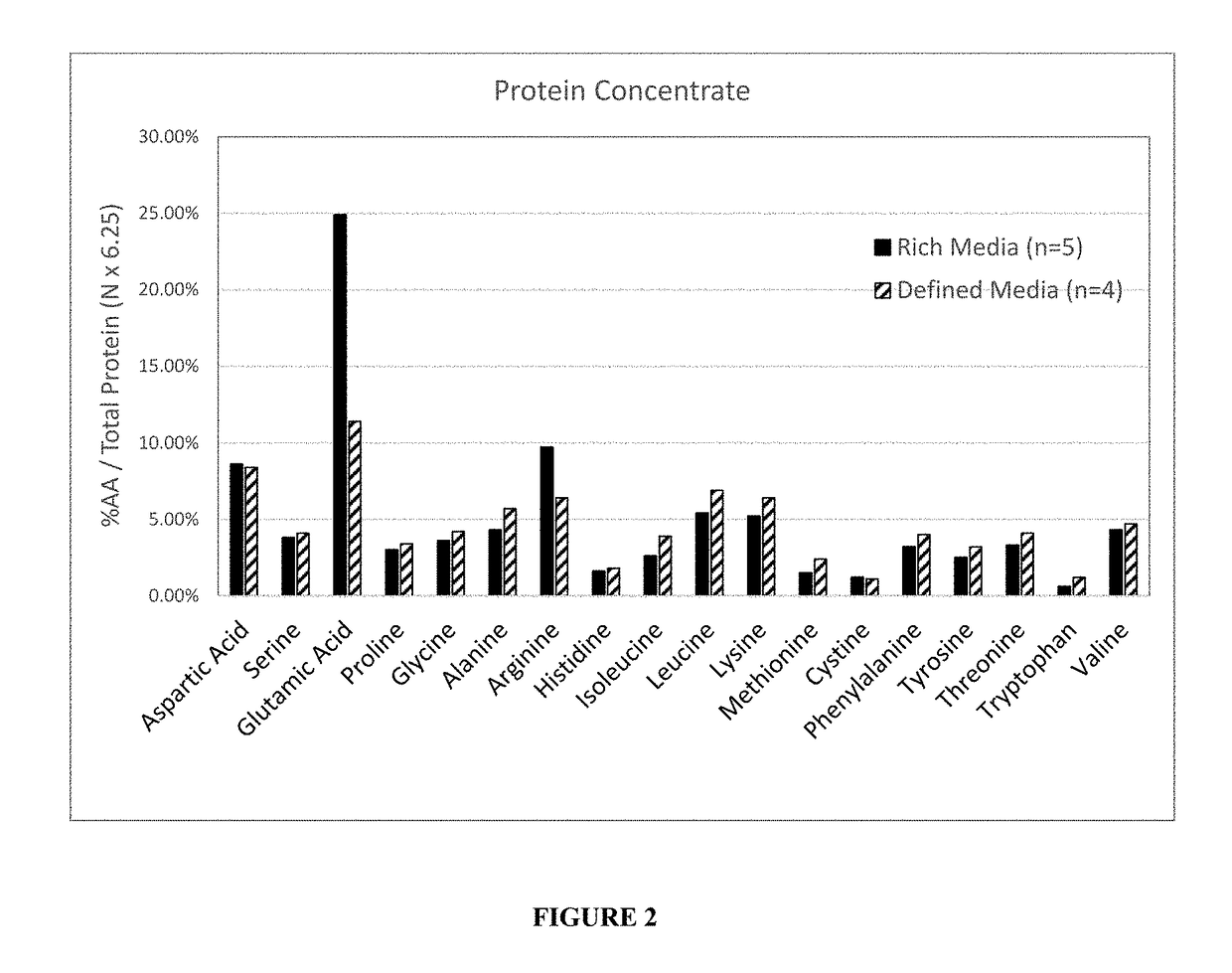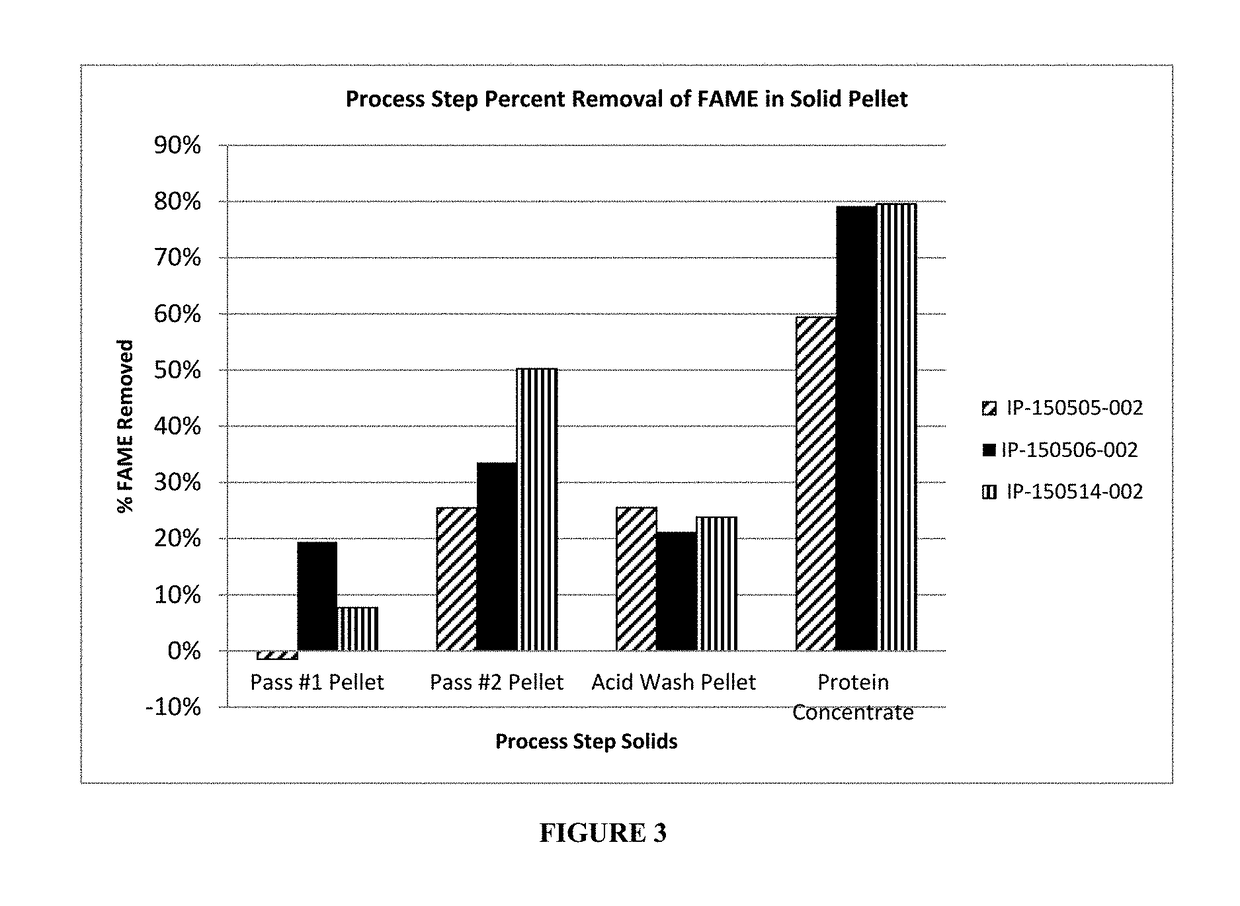Protein containing material from biomass and methods of production
a technology of protein and biomass, applied in the field of protein containing materials, can solve the problems of limiting the commercial use of food manufacturers, consuming a large amount of productive land and water resources, and limiting the ability of sources to supply sustainable supplies of proteins
- Summary
- Abstract
- Description
- Claims
- Application Information
AI Technical Summary
Benefits of technology
Problems solved by technology
Method used
Image
Examples
example 1
[0101]This example illustrates a specific method for producing a dried protein material or concentrate (e.g., a powder) containing proteinaceous material from algal biomass. But persons of ordinary skill with resort to this disclosure will realize other embodiments of the methods, as well as that one or more of the steps included herein can be eliminated and / or repeated. Furthermore, any of the steps described herein can be included in any of the methods.
[0102]In this example algae (or chytrids) of the genus Aurantiochytrium sp. were used and were cultivated in a fermenter containing a defined medium as described above and in Table 1 containing glucose which supplied a source of organic carbon. The medium also contained macronutrients a trace minerals solution. The culture was maintained at 30° C. for 24 hours with 300-80 rpm of agitation, 0.1 vvm to 1.0 vvm aeration, 50% dissolved oxygen, and pH controlled to 6.3±0.1.
example 2
Post Fermentation Processing
[0103]100 kg of chytrid (Aurantiochytrium) fermentation broth (40 kg of solids at 50% protein) was harvested after fermentation and growth per Example 1. After centrifugation, the biomass was washed with aqueous solution followed by another centrifugation and the washed biomass was pasteurized at 65° C. for 15 seconds in a single pass HTST pasteurizer. Pasteurized biomass was then lysed and homogenized in a recirculating bead mill using 200-proof ethanol at a 1:1 (v / v) ethanol to solvent ratio to remove lipids and carbohydrates. The cells were lysed in the bead mill for 15 minutes at 35° C. using 1.0 mm beads, centrifuged to remove miscella and passed through again for an additional 15 minutes under the same conditions. The delipidated biomass was then centrifuged and the pellet was resuspended in water with antioxidants to undergo the acid washing step by lowering the pH to 3.5 for 30 minutes with H2SO4 and then raising the pH to 4.5 with NaOH for 1 hour...
example 3
Analysis
[0104]The dried protein concentrate (DPC) obtained from lots processed as described in Examples 1-2 were analyzed and found to have the amino acid composition as shown below in Table 3.
[0105]Table 3 below shows the UCLAA score for the dried protein concentrate (DPC) of the invention. The UCLAA was calculated as explained herein and it is shown each of the nine essential amino acids in humans is greater than or equal to 1.0, and therefore the UCLAA score for the protein composition is greater than 1.0. Table 3 also compares the dried protein concentrate of the invention to other commercial protein compositions such as whey, soy, and pea proteins, showing whey protein has a UCLAA score of 0.88, soy protein 0.93, and pea protein 0.73.
TABLE 3Comparison of UCLAA Scores of Various ProteinsFAORecommendedValuesDPC from(2-5 yr olddefinedWheySoyDPCchild)mediaProteinProteinPeafromESSENTIALmg a.a.UCLAAConc.Conc.ProteinrichAMINO ACIDSper g proteinscore(n = 2)(n = 9)Conc.mediaHistidine191...
PUM
| Property | Measurement | Unit |
|---|---|---|
| Fraction | aaaaa | aaaaa |
| Fraction | aaaaa | aaaaa |
| Fraction | aaaaa | aaaaa |
Abstract
Description
Claims
Application Information
 Login to View More
Login to View More - R&D
- Intellectual Property
- Life Sciences
- Materials
- Tech Scout
- Unparalleled Data Quality
- Higher Quality Content
- 60% Fewer Hallucinations
Browse by: Latest US Patents, China's latest patents, Technical Efficacy Thesaurus, Application Domain, Technology Topic, Popular Technical Reports.
© 2025 PatSnap. All rights reserved.Legal|Privacy policy|Modern Slavery Act Transparency Statement|Sitemap|About US| Contact US: help@patsnap.com



